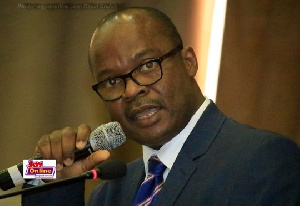Coronavirus: Additional monetary stimulus may pose high risks to financial stability – IMF

Kristalina Georgieva, the International Monetary Fund (IMF) Managing Director, has said in her opening remarks during a forum on ‘New Policy Frameworks for a Lower-for-Longer World’ last week that while new frameworks and tools may speed economic recovery, additional monetary stimulus may pose important risks to financial stability.
She said the traditional approach is to deploy financial regulation and macroprudential tools to mitigate such risks.
This should still be done, but it may not be enough. “As our own Tobias Adrian shows in a new paper, easier financial conditions today could encourage excessive risk-taking.
“Monetary policymakers will need to balance a short-term boost to inflation and output against a buildup of macro-financial vulnerabilities. Tobias will explain this tradeoff in his presentation,” Kristalina Georgieva said.
She made these remarks on the heels of many central banks going back to the lab, reviewing their frameworks to identify innovative strategies and tools that will support the recovery from this crisis and beyond.
She explained that the abrupt collapse inactivity caused by COVID-19 brought unemployment back in focus — and added to it the risk of skill deterioration, and an increase in poverty.
This, according to her, puts pressure on central banks to deliver more rate cuts and further policy accommodation. They do have a critical role to play in what I call the “long ascent” out of this crisis. The problem is that more of the same is not possible, and will not be sufficient at the moment.
Below is her full remarks:
Good afternoon, Washington; good evening, Frankfurt, and good day to everyone! It is my pleasure to welcome you to this policy dialogue focused on the consequences of ‘lower for longer’ interest rates around the world.
By now, you know this story very well: central banks have taken forceful and timely actions, providing ample liquidity and easing monetary policy. These actions have helped maintain the flow of credit and avert financial catastrophe from the COVID-19 onslaught.
The work is far from done, however. Even before COVID, central banks were struggling to boost economic activity and keep inflation at the desired level. A range of policies has been deployed, including promises to keep policy rates very low, and large-scale asset purchases. They have guided the way in the decade following the Global Financial crisis and spurred one of the strongest employment expansions in history, that benefited many lower-skilled and minority workers.
The abrupt collapse inactivity caused by COVID-19 brought unemployment back in focus — and added to it the risk of skill deterioration, and an increase in poverty. This puts pressure on central banks to deliver more rate cuts and further policy accommodation. They do have a critical role to play in what I call the “long ascent” out of this crisis.
The problem is that more of the same is not possible, and will not be sufficient today.
Central banks cut policy rates sharply after 2008. Nowadays, these rates have already been pushed to the floor, or below zero. Even very long-term government bond yields are extremely low or negative, limiting the scope for government debt purchases to boost the economy.
Now, many central banks are going back to the lab, reviewing their frameworks to identify innovative strategies and tools that will support the recovery from this crisis and beyond.
Our distinguished panel —Richard Clarida, Philip Lane, Tobias Adrian, and moderator Carolyn Wilkins, will discuss some of the new ways that central banks can provide stimulus to achieve their objectives and some of the tradeoffs that they will face.
This pioneering effort will be helpful around the world. Many emerging markets now face the same challenges to boost their economies in the wake of the pandemic, with more limited room to cut interest rates. Earlier this year, we saw many of them trying asset purchases for the first time.
New risks
Of course, new strategies and tools might produce new side effects as well.
While new frameworks and tools may speed recovery, additional monetary stimulus may pose important risks to financial stability. The traditional approach is to deploy financial regulation and macroprudential tools to mitigate such risks. This should still be done, but it may not be enough. As our own Tobias Adrian shows in a new paper, easier financial conditions today could encourage excessive risk-taking.
Monetary policymakers will need to balance a short-term boost to inflation and output against a buildup of macro-financial vulnerabilities. Tobias will explain this tradeoff in his presentation.
In conclusion, central banks must be innovative and bold, as they have been before, in renewing their frameworks and updating their toolkits. This will give them vital new ammunition to fight the crisis, and support the recovery. But monetary policy should not and cannot do the job alone. Fiscal policy has a significant role to play — policymakers have stepped up fiscal support during the crisis, and need to continue to do so to underpin a sustainable and inclusive recovery.
The IMF is very supportive of these efforts. Finding the right policy tools and approaches to stimulate our economies, while managing the risks, is a critical endeavour. It is also consistent with our commitment to helping our members overcome the crisis, restore growth and confidence, and tackle challenges on the road to a more resilient global economy. The stakes could hardly be higher: shielding millions of people from the tragedy of job losses and a prolonged downturn.
I look forward to the conversation and hearing the insights from our panellists. Thank you very much for joining us here today!
Source: 3 News





